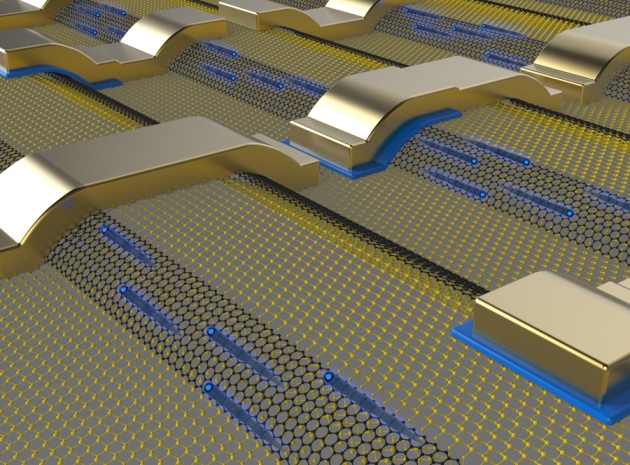MI weekly selection #61

Highly conductive graphene nanoribbons
Graphene nanoribbons can conduct electricity much better than was expected. The new graphene nanoribbons differ from other forms by having no rough edges allowing electrons to move ten times more swiftly than theory says they should. The results could have implications in the development of high-end electronics.
Advanced bionic hand restores sensation of touch
European scientists have developed a bionic hand that transmits the sensation of touch. Dennis Sørensen, who lost his hand in a fireworks accident, was blindfolded and wearing earplugs, yet he could distinguish between round and square or soft and hard objects. The hand, developed at the Swiss École Polytechnique Fédérale de Lausanne and the Italian Scuola Superiore Sant’Anna, uses ultrathin electrodes implanted in nerves in Sørensen’s residual limb.
First coral reef found off southern coast of Greenland
A cold-water coral reef has been discovered off the southwestern coast of Greenland, the first ever found in the region, though cold-water corals have been found before. In another surprise to scientists, the reef is made up of Lophelia pertusa.
Giant Ice Age creatures died off as Arctic wildflowers declined
The disappearance of wildflowers in the ancient Arctic may have led to the extinction of such creatures as the woolly mammoth and woolly rhinoceros. The animals started dying out when the flowers gave way to less nutritional grasses and shrubs during the Ice Age, according to scientists who studied DNA found in Arctic permafrost sediments and remains of the creatures. The findings goes against the popular theory that human migration into the Arctic caused the extinction of the big animals due to hunting.
In vino veritas, redux: wine consumption and academic success
A Cambridge college’s total wine consumption is correlated to its students’ top grades. If you discount the tempting hypothesis that more boozing leads to more braininess, what may be some of the factors at play?